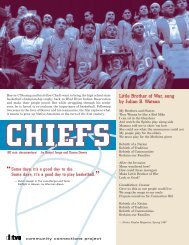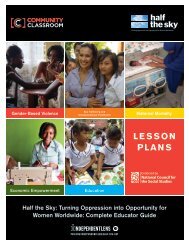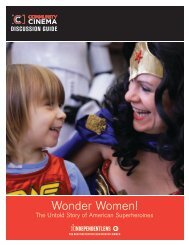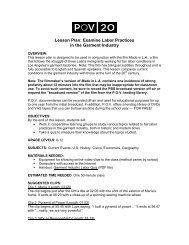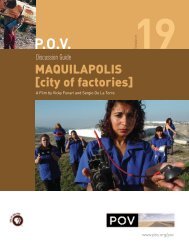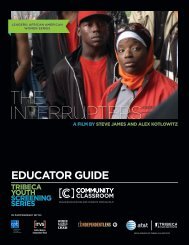Download Lesson Plan (PDF) - FutureStates
Download Lesson Plan (PDF) - FutureStates
Download Lesson Plan (PDF) - FutureStates
- No tags were found...
Create successful ePaper yourself
Turn your PDF publications into a flip-book with our unique Google optimized e-Paper software.
COMMUNITY CLASSROOM: SEEDThe Future of Genetic Engineering<strong>Lesson</strong> <strong>Plan</strong> OverviewTopics CoveredBiological diversity; genetic engineering; environmental balance; natural and human-induced hazards;population growth; science and technology in local, national, and global levels challenges.Target AudienceGrade 9 Biology, Environmental Science with modifications for Grade 10-12 Advanced, AP or Dual creditBiology or Environmental Science. This lesson is designed to follow instruction in biotechnology and requiressome familiarity with agricultural GMOs.National Educational StandardsAll components are aligned to the National Science Education Standards as presented by the NationalAcademy of Science and available as a free download at: http://www.nap.edu/catalog/4962.The lesson addresses the following standards:NS.9-12.1 SCIENCE AS INQUIRYAs a result of activities in grades 9-12, all students should develop• Understandings about scientific inquiryNS.9-12.3 LIFE SCIENCEAs a result of their activities in grades 9-12, all students should develop understanding of• Molecular basis of heredity• Interdependence of organismsNS.9-12.5 SCIENCE AND TECHNOLOGYAs a result of activities in grades 9-12, all students should develop• Understandings about science and technologyNS.9-12.6 PERSONAL AND SOCIAL PERSPECTIVESAs a result of activities in grades 9-12, all students should develop understanding of• Environmental quality• Natural and human-induced hazards• Science and technology in local, national, and global challengesNS.9-12.7 HISTORY AND NATURE OF SCIENCEAs a result of activities in grades 9-12, all students should develop understanding of• Science as a human endeavor• Nature of scientific knowledge• Historical perspectivesIn addition to the National Standards for Science, the lesson plans provide an excellent framework forinstruction in Media Literacy. This instruction further supports both NS.9-12.1 SCIENCE AS INQUIRY andNS.9-12.7 HISTORY AND NATURE OF SCIENCE by instructing students in methods that will make themmore effective in media analysis. Information on Media Literacy can be found at www.NAMLE.net .TimeEach lesson is designed for a 45-55 minute class period. The modules may be separated or combined toaccommodate differences in instructional time. The entire unit is designed to be completed in four days.FUTURESTATES.TV PAGE 1




